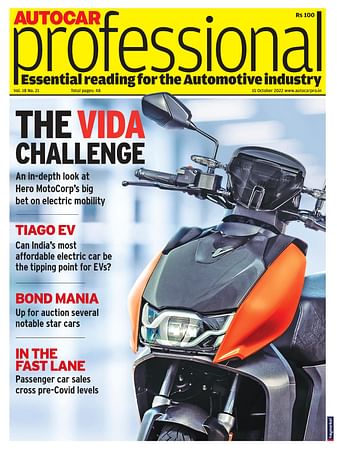India to play greater role in Daimler’s global bus leadership plans
India is currently the second biggest bus market in the world and due to the growing demand for passenger transport, Daimler is keen to make the most of the high growth potential in the Indian bus market.
Daimler Buses has announced that it has sold 28,100 buses and chassis in calendar year 2015, maintaining its global leadership in its core markets in the above 8-tonne GVW buses.
The complete bus business in Western Europe developed particularly well for the company, helping offset the decline of the Brazilian bus market, which plummeted by 40% last year.
According to Hartmut Schick, head of Daimler Buses, "Despite the tense situation in Brazil – one of our key markets – we have reached a good result in 2015. Through the positive development in the revenue-rich business with complete buses and the momentum from the business with intercity buses in Europe, we managed to successfully buffer the revenue decline in the Latin American business."
India is the global growth market
India is currently the second biggest bus market in the world and due to the growing demand for passenger transport, Daimler is keen to make the most of the high growth potential in the Indian bus market. Despite strong domestic players, the company is aiming at gaining market share in the volume and premium segments.
Daimler India Commercial Vehicles (DICV), the local arm of the Daimler AG, has invested Rs 425 crore in its greenfield bus manufacturing plant which went on stream in May 2015. The bus plant, which covers a total area of 113,000 square metres, is initially set up for a capacity of 1,500 vehicles a year and can be expanded up to a maximum of 4,000 units. Daimler has also roped in British manufacturer Wrightbus as a body building partner located close to the factory to make light aluminium bodies.
In July 2015, DICV began commercial production of its buses and it is eyeing volume sales of its front-engined BharatBenz buses in growing segments like buses for schools, office staff and tourists. Sales have already kicked off with select customers. In December last year, the company has introduced the multi-axle, super high-deck SHD 2436 Mercedes-Benz Coach. With a seating capacity of up to 61, the Mercedes Benz 2436 is the longest coach in India. The inter-city market, where Daimler is trying to get a footprint, is dominated by Volvo Buses and Scania India,
Speaking about the India market, Schick said, “We have taken important decisions in recent years, which will be fully realised in 2016. A good example for this is the start of our new production location in India. Here, we have been producing for the local market since mid-2015, and are simultaneously tapping into important growth markets in Asia, Africa and Latin America,” he added.
The above 7.5-tonne GVW bus market, after declining for the past two years, has notched double-digit growth this year. During April 2015-January 2016, the above 7.5-tonne bus segment has grown nearly 18 percent YoY with total volumes of 33,700 vehicles. With a strong recovery in the M&HCV segment, the bus segment is expected to fuel further growth and this makes India an attractive market for a global player like Daimler. Daimler now aims to get a slice of this growing market by making products specific to Indian duty cycles and road conditions.
In addition to the domestic market, Daimler is also eyeing export of buses from its Chennai, India plant. The company has already commenced exports in 2015 with 300 units of chassis delivered to Egypt and other markets.
Speaking the growth prospects for 2016, Schick said, "With respect to the growth in new markets, our goal is clear: We want to develop custom-made solutions for each market and create synergies in our global production and sales network in the process.” However the company expects the Latin American market to remain challenging.
Western Europe leads the pack
Daimler Buses managed to increase unit sales in Western Europe by three percent to 7,800 vehicles. With a market share of 31 percent, the division thus continues number one in the bus business.
Thanks to their high running performance, top-notch safety level and low fuel consumption, Mercedes-Benz and Setra buses are seeing high demand among intercity bus operators. With a market share of around 55 percent, Daimler Buses is market leader in the business with intercity buses in Germany. The Setra double-decker buses comprise as much as 80 percent of intercity buses on German roads. Overall, in 2015 Daimler Buses delivered about 250 double-decker buses in Europe.
Also read: Daimler India signs MoU with Tamilnad Mercantile Bank for vehicle financing
RELATED ARTICLES
Maruti's Kharkhoda Plant construction in full swing
Maruti Suzuki has proposed to spend more than Rs 7,000 crore for the construction and commissioning of this plant which ...
July 2024 From R&D incentives to EV infrastructure: What auto components industry expects from Budget 2024
July 2024 From R&D incentives to EV infrastructure: What auto components industry expects from Budget 2024
Vemuri Young Artist from India Recognized as one of the Winners at 16th Global Toyota Dream Car Art Contest
Vemuri Young Artist from India Recognized as one of the Winners at 16th Global Toyota Dream Car Art Contest






 By Kiran Bajad
By Kiran Bajad
 10 Mar 2016
10 Mar 2016
 5650 Views
5650 Views
















